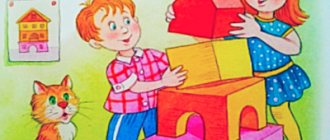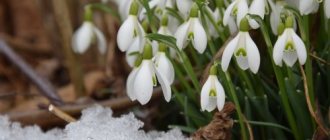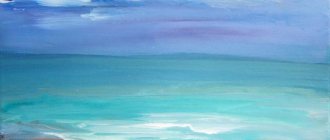345-games.ru
In her free time, the little fish Klopik loved to travel along the seabed, get acquainted with its inhabitants, and learn a lot of new and interesting things. One morning Klopik set off, wanting to explore the area on the western side of his house. Here he and the octopus Bolt often found interesting objects that had fallen to the seabed from a mysterious surface. These amazing objects belonged to people: a compass, a fragment of an anchor, and even ancient coins.
Klopik wanted to find a curiosity and surprise his friends. Having sailed far enough from the house, the fish began to look around in search of something unusual. So far nothing has been observed. Klopik continued on his way. Soon the baby saw a kind of hill made of stones. “Perhaps here I can find something strange and unusual,” Klopik thought and swam closer. And he stopped in horror. Huge green eyes, glowing in the dark, looked at him from under the stones. “What a horror, it’s a shark, or a stingray, or, even worse, a sea witch,” flashed through the head of the frightened fry.
He swam to a safe distance and began to watch the eyes. These were round eyes, undoubtedly belonging to a very large inhabitant of the seabed. Klopik was afraid, but at the same time he was tormented by curiosity - who was hiding behind the stones. “Volt is an octopus, he’s big and strong, he won’t be afraid,” the fish decided and went after his friend.
Volt the octopus lived with his family in the seaweed thickets. At this time, he was relaxing after lunch, stretching all his tentacles along the bottom. After listening to his excited friend, Volt became interested and decided to find out what kind of monster lives very close to his house. But for courage, the friends decided to take with them the crab Orsi, who was known as a great lover of adventure.
Orsi was basking on a rock, he had nothing to do and he gladly decided to join his friends. The three of them went to the place where Klopik discovered terrible eyes. All the way, Orsi chuckled at the timid fry and the cautious octopus: “What’s so scary about that? Just think, some eyes! We found something to be afraid of. Now I’m not afraid of anything - neither sharks, nor whales, nor other inhabitants of the sea. I am fearless and...” The crab did not finish speaking - he saw those same creepy giant eyes and with a loud scream hid in the algae thickets.
The friends stopped - their eyes looked at them without blinking, they were even bigger and even more terrible.
-Who could it be? - asked the recently brave Orsi in a trembling thin voice.
“Let’s get out of here,” Volt suggested.
“No, we need to know who is hiding in the stone cave,” little Klopik, as it turned out, was the bravest of his friends. “If it’s a monster, we have to find out everything for sure and tell our parents.” We may all have to move to a new place to avoid becoming food for him.
The crab and octopus agreed, but no one dared to come closer. They silently looked at the terrible monster hiding under the stone and casting unkind glances in their direction.
The friends spent a long time near the rock, not knowing what to do next. It would have been right to call one of the adults, but I really didn’t want to be branded as timid. But it’s scary to take risks yourself. Friends consulted, argued, shouted, but could not find a solution. Finally, plucking up courage, they decided to call the monster, ask it to crawl out into the light, look at it and immediately run away.
Klopik shouted:
- Hey, you creature sitting in a cave under the stones! Crawl into the light, we want to take a look at you.
- Why do you need this? – asked the mysterious creature. It’s strange, but his voice turned out to be not scary at all. Rather, quiet and melodic.
“We want to know who you are,” Volt said.
-Will you not offend me?
Here the friends were even more amazed.
“No, of course, but don’t offend us either,” said Orsi.
“Okay,” the creature agreed. A few moments later, the friends saw that small horns first appeared from the cave, then a head, and soon a snail stood in front of them. She was very small, cute and completely not scary. But the huge heads occupied most of the head.
“Hello, snail,” said Klopik. It turned out that he shouldn’t have been scared and invited all his friends.
- Hi guys. My name is Cora, I always sit under the stones and don’t offend anyone, I just feel comfortable and safe there.
- Why do you have such big eyes? – Orsi asked.
- They're not that big. The most ordinary eyes. But you seemed evil and scary to me. That's it, I think now these giants will pull me out and eat me. Everything was huddled there under the stone.
- We? Giants? – Volt was surprised. “We’re just a little bit bigger than you.”
So Klopik, Orsi and Volt found themselves a new friend, the snail Kora, who turned out to be very cheerful, constantly coming up with new games and entertainment.
But why did her eyes seem huge to her friends? And why did Kora see them as giants? The answer is simple: fear has big eyes!
Recommended reading:
The Tale of the Fox and the Rainbow

Country Somersault

A real mother for a puppy
LiveInternetLiveInternet
History_By_Us_- ( Libertalia
) all posts by the author Told by
Anna Providence
Tiddalik causes a flood. (Australian folk tale). Tiddalik was the largest frog in the world. One day he drank water from all the ponds, lakes and rivers of the world. All that was left was the water in the seas. But the animals could not drink salt water, so they had to die of thirst. Luckily, Eel had an idea. He began a funny dance which made Tiddalik laugh. When his mouth opened, water flowed into ponds, lakes and rivers, and the animals were saved. Why does the crab have no head? (African folk tale). Goddess Nzambi created all animals. She started creating the Crab just before bedtime and didn't have enough time to finish it. “Come tomorrow, I will give you the head,” she said. “It takes Nzambi two days to make me, because I am a very important person,” the Crab boasted to the other animals. Nzambi heard about the crab's boasting and decided not to give him his head. The crab hid under a rock in shame. To this day, he pokes his eyes right out from under the sink, since he still has no head. Magic fish. (Scandinavian folk tale). One day a poor fisherman caught a magic fish. “Let me go, and I will do everything you wish,” said the fish. The fisherman wanted a big house, and his wish came true. He caught the magic fish again and again and made more and more wishes. And his every wish came true. But when the fisherman demanded the moon and stars, the fish decided that he was too greedy and took all his gifts. And the fisherman became poor again. How the starfish was born. (Based on a story by Donald Bisset). One day, on a dark, starry night, seven elephants decided to catch a falling star. They went to the top of the sea cliff and, climbing one on top of the other, formed a tower. The baby elephant, who was at the very top, reached out and took out the shooting star with his trunk. But he couldn’t hold her and dropped her into the sea! A passing fish swallowed it and turned into a starfish. Why is the water salty? (Norwegian folk tale). One day a sailor stole a magic mill that could grind whatever you wanted. He took her to sea on his ship and demanded that the mill grind salt for him. When there was enough salt, he ordered the mill to stop, but did not know the magic words. Soon there was so much salt that the ship and the mill sank to the bottom of the sea, and the mill continued to grind salt. She continues to grind it to this day, which is why the sea is salty.
Lesson notes for the senior group “Inhabitants of the Seas and Oceans”
Irina Ignatenko
Lesson notes for the senior group “Inhabitants of the Seas and Oceans”
Goal: Expand, deepen and consolidate children’s knowledge about the inhabitants of the seas and oceans .
Continue to introduce children to marine animals, some representatives (whale, shark, dolphin, sea turtle, crab, jellyfish, octopus, seahorse): their appearance, characteristics of movement, adaptability to life in the aquatic environment, feeding habits, behavior; introduce some forms of protection of marine life .
Intensify cognitive activity: cultivate a desire to learn more about marine life , develop children's curiosity.
Develop fine motor skills of the hands.
Enrich and activate children's vocabulary.
Foster a caring attitude towards living things.
Material: illustrations with sea animals; riddles on a marine theme; finger games; poem by V. Lanzetti “The Multicolored Octopus”
; red cardboard, a set of cardboard geometric shapes of different colors.
CANCER HERMIT
Crayfish climbed the mountain and learned to whistle. It only turned out to be a BREAK! Cancer fell from the mountain. (I. Zhukov) In a hermit crab, only the front part of the body is covered with a hard shell, and the abdomen is soft and defenseless. To protect themselves from sea predators, these animals hide in empty sea snail shells, like hermits in caves. The soft abdomen can curl into the curls of the shell, and the abdominal legs quickly pull the body inward. When moving, crayfish carry the shell with them all the time. When they are in danger, hermit crabs climb entirely into the shell, closing the entrance with a large claw.
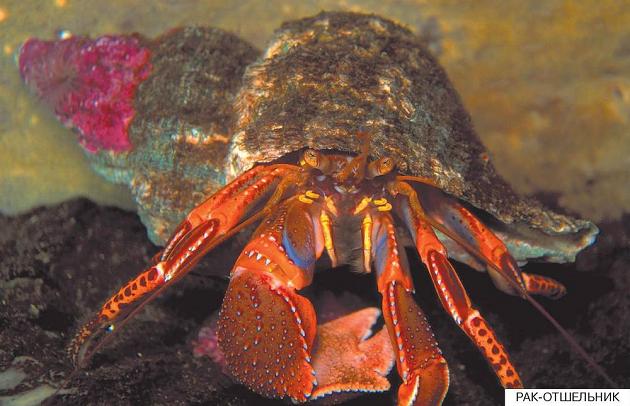
When a hermit crab grows up, the old shell becomes too small for it. He gets out of it and looks for a larger sink. At this time, he needs to be especially careful so as not to get eaten by predatory fish. To enhance protection, the hermit crab often places a sea anemone on its shell. This beautiful ocean dweller, like a bright flower, has very burning tentacles. If you touch them, you can get seriously burned. A hermit crab, having encountered an anemone it likes at the bottom, uses its claw to “pluck” it from the stone and transplants it onto its shell. Anemone is not at all against such a neighborhood - after all, she always gets crumbs from the hermit crab’s dinner table. When a cancer exchanges an old shell for another, it also transplants its burning neighbor to a new home. Very often, hermit crabs engage in real battles with their relatives for the possession of a shell or a beautiful sea anemone. The defeated cancer lies on its side or back, and the winner does not touch it anymore. RIDDLES People live under water and walk backwards. (Crayfish) Not a blacksmith, But with pincers. (Cancer hermit)
- To the begining
- Back
- 1
- Forward
- In the end
SHARK
Here the doodle shark opened its evil mouth. Would you like to go to the doodle shark? Right in the mouth. (K. Chukovsky) Sharks are powerful predators, often called “sea wolves.” The body of sharks is ideally suited for fast swimming. When creating high-speed torpedoes and submarines, shipbuilders strive to give them the outline of a shark. The shark had pain in several of its teeth at once. Help her quickly, Call the doctors! (N. Migunova) Sharks have a lot of sharp teeth. They grow in several rows, are triangular in shape, curved back and jagged at the edges. Their sharpness can be compared to a surgical scalpel. Sharks have no scales, and their skin is so tough that residents of tropical countries use shark skin as a grater or sandpaper. Many people are sure that sharks are very brave animals, so they fearlessly rush at their prey. In fact, sharks are cowardly and attack only when they are convinced that the victim is defenseless. But, sensing the smell of blood, the shark forgets about the danger. Sharks have such a keen sense of smell that they can smell blood from several kilometers away. The shark feeds on fish, but also attacks dolphins, seals, turtles, other sharks and even whales.
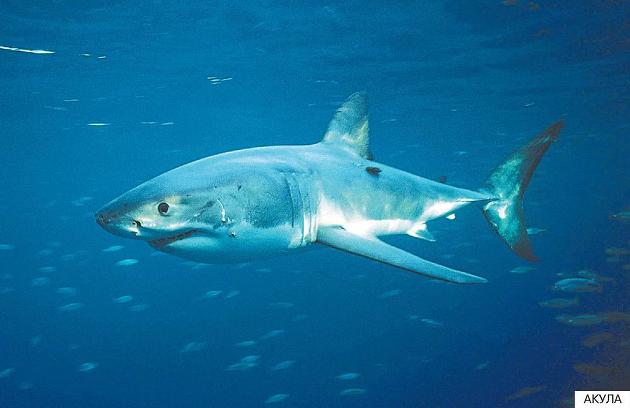
Don’t look at the fact that the shark has cheekbones that are invisible from the side, and has three rows of teeth in its mouth - it will eat anyone without difficulty. (Yu. Parfenov) A hungry shark can attack everything it sees nearby. Various garbage was often found in the stomachs of caught sharks: cans, rags, wreckage of boats, and once even a depth charge was found. Many sharks are dangerous to humans. These are white and tiger sharks, mocha and hammerhead sharks. They are large in size and can easily bite a person in half. But the largest of the sharks, the whale shark, reaching a length of 19 meters, is quite peaceful. Unlike its predatory relatives, it feeds on plankton and small fish.
Ecological fairy tale for children 7-11 years old
Author's fairy tale “Saviors of the Blue Sea”

Sars, Oktyabrsky district, Perm region. Supervisor: Natalya Gennadievna Merkuryeva Description of work: This material is intended for children 7-11 years old. This fairy tale can be useful for elementary school teachers in literature lessons or at class events dedicated to caring for nature and environmental issues. The fairy tale can also be used for reading in the family circle, by parents who instill in their children a love of nature. Goal : to teach children to respect nature, sea bodies, and animals. Objectives: - reveal the importance of maintaining the cleanliness of sea waters: - show the harmful effects of pollution on the flora and fauna of the seas;
— develop interest and desire to study the riches of the seas and oceans; — cultivate a sense of responsibility, mutual assistance, responsiveness; - develop imaginative thinking, imagination and creative abilities of children. Saviors of the Blue Sea
A white, white ship sailed across the blue, blue sea. It was early morning, and the people on the ship were still fast asleep. The sea was clean and transparent. Both the sky and the fluffy clouds were reflected in it so clearly, as if in a huge mirror. In the azure waters, diamond fish frolicked as if in a merry dance, majestic whales noisily released fountains, and fancy gelatinous jellyfish glided in a slow and graceful dance. And snow-white gulls flew over the sea, they smoothly descended onto the soft waves and basked in the first rays of the gentle sun. It was quiet and calm around. But suddenly, a black oil slick emerged from under the white ship. It laughed evilly and howled: “Finally, I’m free!” Stupid people are sleeping and do not know that their ship has leaked, and the stain began to quickly spread across the surface of the Blue Sea. Where it swam, all living things died on its way: algae and corals withered, pearls and shells faded, and fish, shellfish, and crabs died in whole flocks. When snow-white seagulls descended onto the waves, the Black Spot immediately sucked them into its poisonous slurry. It greedily devoured all the inhabitants of the Blue Sea, and every minute it became larger and larger, more and more terrible and terrible, it gained strength... And people living on the sea coast returned home without a catch, were sad and perplexed: “Where did all the fish disappear?” » But this was not enough for the Black Spot, and it wanted to take possession of the entire sea and destroy all its inhabitants. - Soon, very soon the Dead Sea will be here! I will poison the Blue Sea, and neither fish, nor animals, nor birds will live here. I will release a poisonous fog into the sky, and the bright sun will never shine again! There will be eternal night and eternal silence here! – the spot howled loudly, instilling terrible fear in all the inhabitants. “I, and only I, will be the mighty Lord of the Blue Sea!” And so the Black Spot grew to gigantic proportions, and it seemed that nothing could stop it. The sea became black and choppy. The sky was covered with heavy poisonous clouds, and not a single ray of sunlight could penetrate this dense curtain. Fierce waves rushed at each other with a wild roar, raising huge foamy crests. And over the sea, the ominous laughter of the Black Spot was heard louder and louder. The surviving sea inhabitants hurried to quickly swim away to other seas and oceans. Anxiety and confusion gripped the residents of the coast. Several fishing boats have already not returned to their native shores; the Black Spot mercilessly swallowed them, like insignificant grains of sand. Overwhelmed by fear of the raging elements, people hid in their homes. And now even the bravest daredevils did not dare to go out into the blackened and hostile sea. And then the diamond fish remembered the old and wise Stingray, who lived at the very bottom of the Blue Sea. He rarely swam out of his shelter, preferring to sleep peacefully all day long, buried deep in the sand. After carefully listening to the frightened fish, Skat said: “Far, far away, behind the high Gray rocks, in the deepest and most beautiful Emerald Bay, emerald dolphins live.” Since ancient times, dolphins have been the guardians of the Blue Sea. Oh, these are the smartest and friendliest sea animals, they never give up in trouble! Only they can help us! But we need to hurry before the Black Spot destroys the entire sea. I will show you the way to Emerald Bay. And then, the little fish harnessed two golden skates to a large mother-of-pearl shell and, placing old Stingray in it, hurried to the Gray Rocks. It seemed as if the sea itself had come to the aid of the diamond fish; they were immediately picked up by an undercurrent and quickly carried to where old Skat was pointing. Only at sunset, in a shroud of sparkling spray, the Gray Rocks appeared, and behind them - the Emerald Bay. The wise dolphins, having learned about the Black Spot, immediately began to call all their brothers and sisters from the neighboring seas to help. Thousands of dolphins swam to the call of their relatives. Having gathered in huge flocks, the first thing they did was swim to the fishermen and ask them for the largest and strongest nets, such that not a single drop of the poisonous stain could seep into the sea. “But where can we get such networks?” - people thought. And then they remembered the sails. Yes, yes, the sails are the strongest and most reliable, impregnated with thick resins, they withstood even the most ferocious winds and stormy waves! From all corners of the coast, fishermen began to bring sails taken from their ships and sew them together with strong threads. People were in a hurry and by the morning of the next day, hundreds of meters of sails were sewn into one giant cloth. And so thousands of dolphins, holding huge nets in their teeth, rushed in a swift avalanche to where the treacherous spot was raging. Brave animals surrounded the enemy from all sides and began to drive him into the net. The black spot resisted fiercely, it darted from side to side, throwing itself at the nets with huge sticky tentacles, but the dense ring of dolphins inexorably shrank. In impotent hatred, the spot spat black slurry, released clouds of poisonous fog, but could not escape from the trap. Choking with anger and fear, it howled and growled threateningly: “I’ll show you, you nasty dolphins!” I am the mighty Lord of this sea! You will still remember me, you stupid creatures! I will poison all your seas and oceans! But the emerald dolphins unanimously pulled the nets to the shore, to where the people were waiting for them. Only at the end of the day, tired and exhausted from the grueling battle, the dolphins drove the Black Spot to the very shore. And all the people immediately began to collect it in buckets, barrels and burn it over a hot fire in huge cast-iron cauldrons. For several days, from dawn to dusk, people worked without rest... Finally, not a single drop remained of the Black Spot. At the same moment, the poisonous fog suddenly cleared, the sky brightened, and the bright sun shone again. The sea became calm and transparent. It came to life right before our eyes: beautiful coral gardens blossomed, bizarre sea anemones blossomed like fantastic flowers, lush forests of emerald algae grew, whole flocks of fish, shellfish, crabs returned... Oh, how the people and inhabitants of the Blue Sea rejoiced! The diamond fish dived and twirled merrily in a waltz, dragging old Stingray along with them. The golden skates started racing across the azure waves. And the emerald dolphins released thousands of crystal fountains into the sky, the splashes of which, falling from above, turned into sparkling rain. People smiled, dolphins smiled. Together they saved the Blue Sea!
Related posts:
An ecological fairy tale for children on the theme: Autumn A fairy tale for preschool children about a sunflower A poem for the Year of Ecology for children A quiz with answers on fairy tales for middle school children
Similar articles:
Ecological “The Tale of the Fisherman and the Fish” in a new way. Scenario by role

